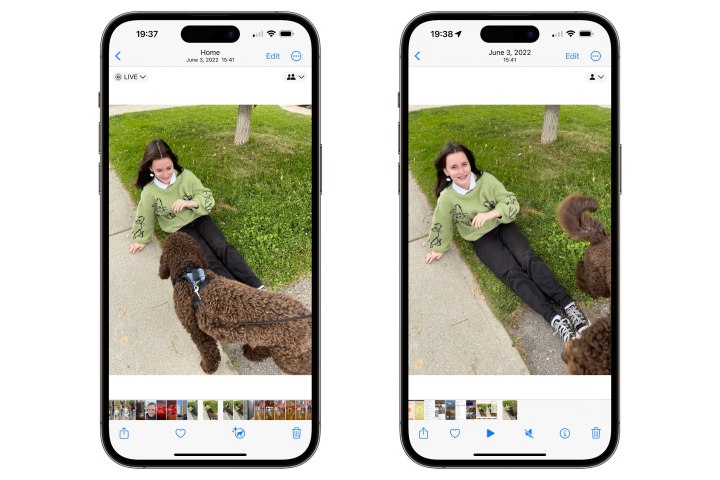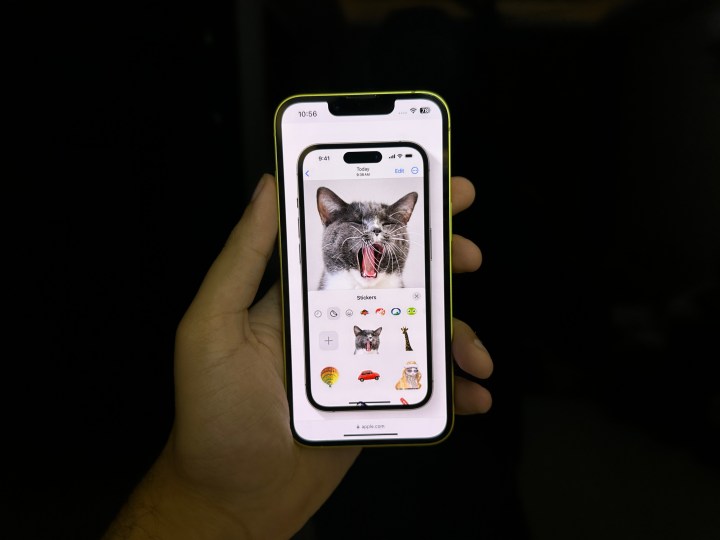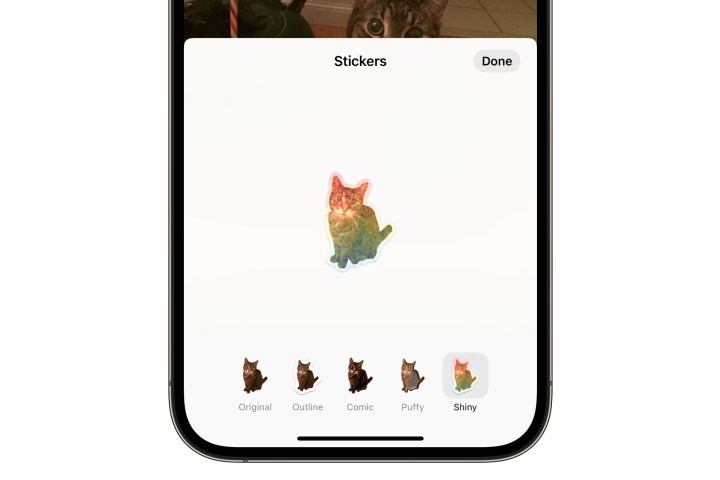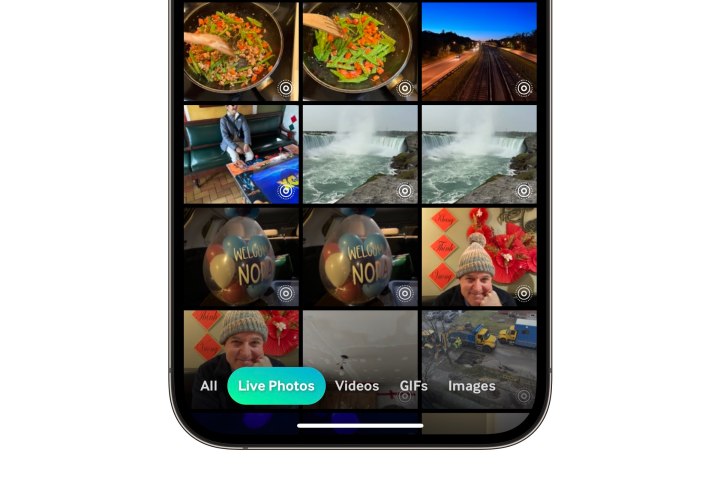Apple’s Live Photos feature is a great way to add some extra charm to your normal, everyday iPhone pictures. Enabled by default, Live Photos automatically records and integrates the 1.5-second interval before and after you hit the shutter button on your iOS device. The end result is a lightly animated image, which can easily be shared via iMessage or a Shared Photo Album with any friend of family member with an iPhone, iPad, or Mac.
- How to save a Live Photo as video
- How to combine multiple Live Photos into a single video clip
- How to use Loop, Bounce, or Long Exposure with Live Photos
- How to turn a Live Photo into an animated sticker
- How to convert Live Photos to animated GIFs
- Why can’t I save a Live Photo as a video on my iPhone?
- How do I turn a Live Photo into a video or GIF?
You’ll also be able to share a static version of any picture captured as a Live Photo. But if you’d like to enchant your Windows and Android device buddies with your moving pics, you’re better off converting that Live Photo into a video or animated GIF. This is also the best way to future-proof your Live Photos against any down-the-line compatibility issues the Live Photo format might face from non-Apple hardware.
Fortunately, the settings and tools to convert your Live Photos into videos and GIFs are built right into the Photos app.

How to save a Live Photo as video
The steps to create a video from a Live Photo differ slightly depending on which version of iOS you're using. The latest version, iOS 17, works on any iPhone released in the last seven years, whether that's the latest iPhone 15 or iPhone 15 Pro, or a 2017 iPhone 8. However, if you're still toting an iPhone 6s or iPhone 7, both of which support Live Photos, you'll be stuck on iOS 15.
Fortunately, the process is nearly identical for both versions, with only one option located in a slightly different place on those older models.
Step 1: Open the Photos app on your iPhone.
Step 2: Select the Album icon from the bottom.

Step 3: Scroll down and select Live Photos from the list below "Media Types." This will show you a gallery view of only the Live Photos stored in your photo library. You can navigate here as you would the main Library view, including using pinch gestures to zoom in and out on the grid.

Step 4: Choose a Live Photo from the gallery to open it.
Step 5: With your chosen Live Photo open, tap the three-dot More button at the top right of the screen. A drop-down menu will appear with more options.
If you're using iOS 15, you'll need to choose the Share button instead to bring up the standard iOS share sheet.

Step 6: Choose the Save as Video option from the pop-up menu (iOS 16 or later) or the share sheet (iOS 15). Your iPhone will create a copy of the Live Photo as a standard video clip.

Step 7: If the "Save as Video" option does not appear on the menu or share sheet when you have a Live Photo selected, this is most likely because you've either turned off the Live Photo feature or enabled an effect mode such as a Loop or Bounce (which we'll discuss in the last section). Live Photos with effects cannot be converted to videos, so you'll need to set the photo back to a normal Live Photo.
You can do this by selecting the Live button in the top left corner of the photo (which may also say Loop, Bounce, or Long Exposure) and setting it back to Live from the drop-down menu that appears.

Step 8: The video clip will be saved with the same metadata as the original live photo, including the same date, time, and location information. This means it will be sorted alongside the original Live Photo, which won't necessarily be at the bottom of your Library timeline unless you're converting one you just took.

Step 9: The fastest way to locate your saved video is to go back to the Albums view and look in the Recents album, which sorts your photos by the date they were actually added to your library rather than their internal timestamps.
How to combine multiple Live Photos into a single video clip
With iOS 16 or later, you can also combine multiple Live Photos into a single video clip, effectively creating a montage of your Live Photos. Here's how:
Step 1: Open the Photos app on your iPhone.
Step 2: Select the Album icon from the bottom.
Step 3: Scroll down and select Live Photos from the list below "Media Types" to see only the Live Photos stored in your photo library.
Step 4: Choose Select from the top right corner.

Step 5: Select the Live Photos that you would like to combine into a video.
Step 6: With your chosen Live Photo open, tap the three-dot More button at the bottom right of the screen to bring up the options menu.

Step 7: Choose Save as Video.
Depending on how many photos you've selected, this process may take anywhere from a few seconds to a couple of minutes. A "Saving..." dialog will appear while your Live Photos are being processed into a video. Once the video has been created, you'll be returned to the Live Photos view; you may need to visit the Recents album, as described in the last section, to find your video, as it will have the timestamp of the oldest Live Photo you selected for your montage.
Note that there doesn't appear to be a practical upper limit for how many Live Photos you can collate into a single video. However, as with converting an individual Live Photo to a video, you won't be able to include Live Photos where you've disabled the Live Photo feature or added a Loop, Bounce, or Long Exposure effect to. The"Save as Video" option won't show up on the menu if any of these are part of your selection.
How to use Loop, Bounce, or Long Exposure with Live Photos
You can also add special effects to your Live Photos to make them a bit more fun. Apple currently offers three: Loop, Bounce, and Long Exposure.
Loop will turn your Live Photo into a short loop that plays continuously without a pause, while Bounce makes the Live Photo play backward and forward continuously. As the name suggests, Long Exposure displays your Live Photo as a static image that combines the three seconds of video to make it look like a picture taken with a very slow shutter speed.
While Live Photos with these settings enabled can't be converted to videos using the tools built into the Photos app, you'll still be able to view them on your iPhone and other Apple devices and share them with friends and social media services that can handle Live Photos.
Step 1: Open the Photos app and choose a Live Photo.
Step 2: With the selected image open, choose the Live button in the top left corner, and select Loop, Bounce, or Long Exposure from the pull-down menu. You can also select Off if you'd like the Live Photo to appear as a normal static image.
How to turn a Live Photo into an animated sticker
Introduced on iOS 17, Apple users will now be able to turn Live Photos subjects into animated stickers. Not only are these stickers conveniently located within the emoji keyboard, but they’re also synced to your iCloud, which means you’ll be able to access them from any of your Apple devices logged in with the same Apple ID.
Step 1: Launch the Photos app on your iPhone.
Step 2: Select a Live Photo to open it in full screen.
Step 3: Tap and hold the subject of your Live Photo, then slide up on the image until a duplicate version of the subject is revealed.
Step 4: Select Add Sticker.

Step 5: To add effects like Outline, Comic, or Puffy to your stickers, tap Add Effect.

How to convert Live Photos to animated GIFs
In some cases, you may prefer to share your Live Photo as a GIF instead of a video. This may be preferable on some social media services, especially those that autoplay GIFs or don't support uploading video clips.
There's no built-in method in iOS 17 to convert a Live Photo to an animated GIF, but as usual, the App Store has a wealth of options to fill that void. Not surprisingly, one of the most popular is Giphy, which can convert any Live Photo to an animated GIF — even those with Loop or Bounce effects added — while letting you trim it, customize it with your own effects and share it directly to social media. Giphy also lets you save Live Photos as video clips with the same editing features and the ability to handle Live Photos with Bounce and Loop effects.
The only downside to Giphy is that you'll have to sign up for an account to use it, although it supports Sign in with Apple. However, if you'd prefer to avoid that step, there are several other apps on the App Store that will get the job done, although they aren't as full-featured as what Giphy offers.
Step 1: Download Giphy from the App Store, open it, and sign in or sign up for an account.

Step 2: Select Create in the top right corner.
Step 3: When prompted, grant access to your Camera and then select the photo thumbnail in the bottom left corner to open your photo library, once again granting access when prompted.

Step 4: Select Live Photos from the bottom to see only your Live Photos.
Step 5: Choose a Live Photo you would like to convert to a GIF to open it.

Step 6: A set of editing tools will appear to let you customize your Live Photo before saving it as a GIF, including cropping and trimming, plus adding stickers and text effects. Use these to make any edits you'd like, and when finished, choose the Right Arrow in the bottom right corner to proceed to the next step.

Step 7: A preview of your finished GIF will appear on the next screen. Choose Share GIF to proceed to the next screen, or the smaller Tap to Copy GIF if you'd prefer to just grab a copy on your clipboard to paste into another app.

Step 8: On the "Share Video" screen, choose Save GIF to save a copy of the GIF to your photo library, or Save Video to save it as a traditional video clip. You can also use the other options here to share the GIF directly to Messages, Facebook Messenger, Snapchat, or Instagram.
Why can’t I save a Live Photo as a video on my iPhone?
One of the most common reasons you may not able to convert a Live Photo to a video is that the Live Photo you’ve selected contains a Live effect. These are Loop, Bounce, and Long Exposure.
To remove an effect, open the Photos app, tap a Live Photo, then tap the Live button (top left corner of the screen). Choose Off from the list of options, and any Live effects will be removed from your image.
How do I turn a Live Photo into a video or GIF?
You can convert a Live Photo to a video in iOS 16 or later, simply select a Live Photo from the Photos app and tap the three-dot More button at the top right of the screen (iOS 15 users will need to tap Share instead). Then, just select Save as Video from the list of options.
As for GIFs, you can use apps like Giphy to convert your iPhone’s Live Photos into animated GIFs. If you happen to own a Mac or MacBook, you can also use the computer’s Photos app to create a GIF.
To do so, open the Photos app on your Mac and double-click a Live Photo, then click Edit. Next, click the pop-up menu in the bottom left corner, then click Loop > Done. Now just click File > Export > Export GIF.
Editors' Recommendations
- iPhone SE 4: news, rumored price, release date, and more
- There’s a big problem with the iPhone’s Photos app
- How to use iMessage on an Android phone or tablet
- Best iPhone 15 deals: How to get Apple’s latest iPhone for free
- The 10 best photo editing apps for Android and iOS in 2024






